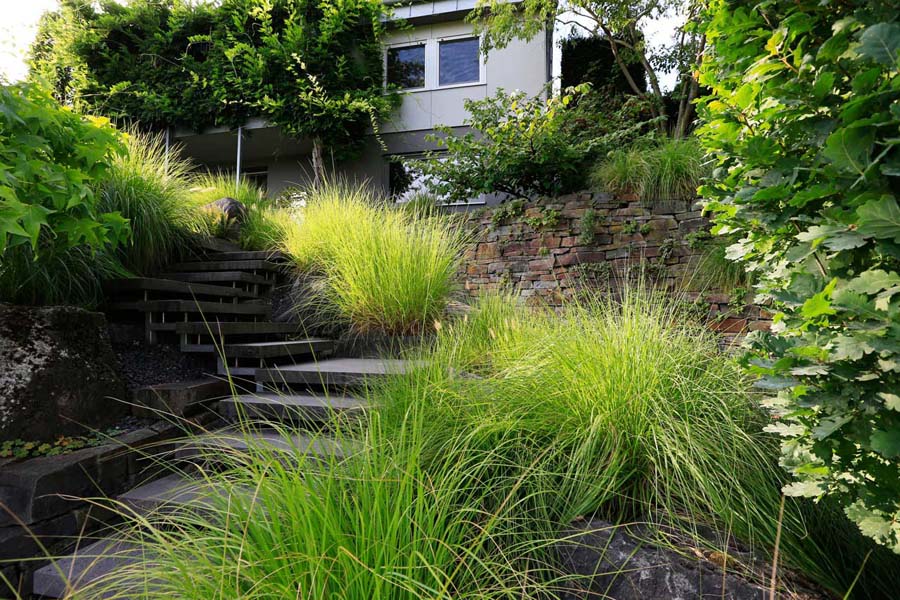
29. July 2019
The front garden – dead stone desert or natural climate zone
The front garden must not do any work
It must be easy to care for and therefore make as little work as possible, until no work at all. Today this is more and more the maxim. Especially in modern new buildings one sees increasingly a stone desert of coarse gravel instead of a front garden designed with plants. This is not good for the eye, the insects or the climate. Garden designer Peter Berg therefore pleads for more naturalness in front of our front doors. Above all, we should use more woody plants that bind the fine dust, produce oxygen and lower the temperature.
Easy-care aesthetic front garden design convinces
As an experienced garden designer, Peter Berg knows that a natural front garden created with planning requires little maintenance, but offers many advantages. A well thought-out combination of structure-giving natural stone with selected, long-lived plants considerably reduces the maintenance effort. At the same time however thereby an ecologically valuable range is created, from which humans, as well as nature profit. Also the optics is substantially more convincing and raises at the same time the value of the entire real estate.
Foils and gravel are no problem solvers
If you want to have an ecological and natural garden, an understanding of nature is indispensable. Unfortunately, this is becoming increasingly rare today. Especially in the front garden area the large area use of gravel is preferred. This testifies to an unnatural relationship to “cleanliness” and the belief that one would never have work like this again. However, this is a deceptive conclusion. “Nature always seeks its way,” says Peter Berg. Even supposedly dense foils and heavy rocks do not help. An entry of weeds from the environment cannot be avoided, and when trying to remove them, one inevitably gets stuck in the foils.
Trees improve the climate
Especially in our ever warmer climate and summer temperatures approaching 40 degrees, large deciduous trees are particularly important. They provide protection for humans and animals from increasingly intense solar radiation. At the same time, they are real climate-improvers. With their foliage they create a light shade and contribute to cooling the environment. The evaporation of water has an extremely positive influence on the environment, which also benefits other plants. In addition, woody plants absorb CO2 from the air and give us oxygen. Even fine dust, which now pollutes not only large cities, is absorbed by them.
In Berg’s front garden alone, you can already see five different types of trees and shrubs that adorn it with their lush greenery. Attractive grasses and shrubs are planted underneath. “In nature, every piece of soil is covered with plants,” explains the expert. “There is undesirable vegetation only if it is not planted closed or the plants do not fit together.
Woods, shrubs and grasses offer birds and insects an ideal habitat, improve our climate and create a piece of nature in our private sphere – and this also includes the front garden.